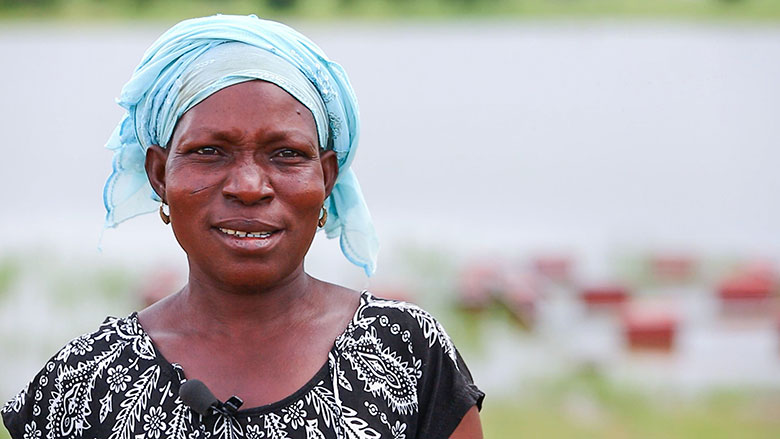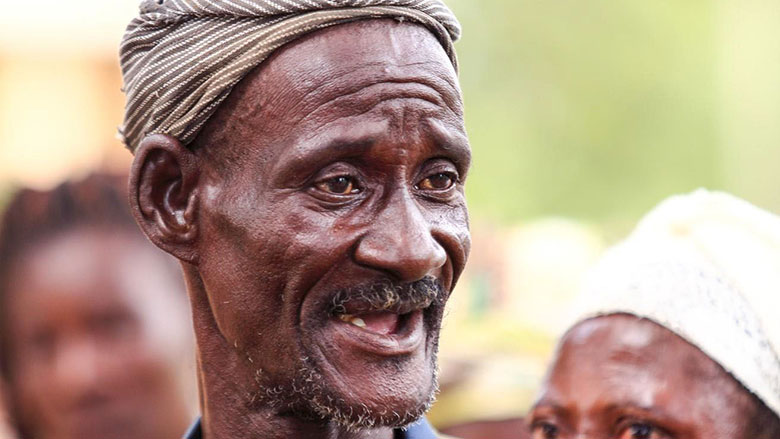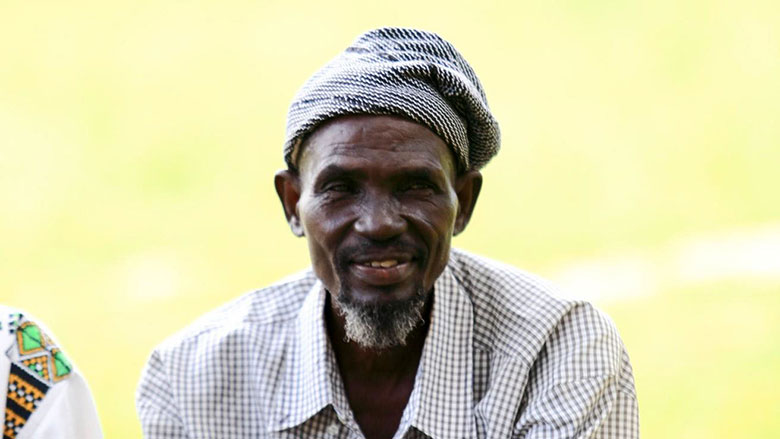Challenge
Ghana had experienced a period of significant economic growth, with Gross Domestic Product (GDP) growth rates rising from 4.0% to 15.0% between 2005 and 2013. Ghana met the Millennium Development Goal One (1) target of having halved poverty since 1990, with poverty rates dropping from 56% to 24.6% (and again from 28.5% in 2002/03), and extreme poverty rates dropping to 8.4% (from 18.2% in 2002/03). Enrolment in primary schools also increased, and access to preventive health care was improved.
However, the benefits of economic growth and poverty reduction have not been equally distributed across the nation. Ghana’s relatively high level of income inequality continues to rise (the Gini coefficient in 2016 was 42.3), with significant differences existing both between regions and between rural and urban areas. Poverty rates in northern regions of the country are two to three times the national average, and chronic food insecurity remains a critical challenge. There are also pockets of extreme poverty in the south. Despite positive strides made in developing an effective social protection system, the system is still in its nascent stages, and requires further focus to strengthen it. There is room to improve the accuracy of targeting (to ensure the intended target beneficiaries receive the needed assistance), as well as to promote better coordination between social protection programs to reduce the duplication of effort, and to enhance citizen feedback mechanisms so that beneficiaries’ grievances are heard and addressed. Additionally, more resources will be required to generate sustainable livelihood activities for the social assistance beneficiaries who have labor capacity, and to promote youth access to more productive jobs.

Approach
The GSOP project has 3 main components: (i) Social Protection Systems Strengthening, which improve the overall social protection system through increased capacity building and the development of the Ghana National Household Registry to assist social protection and poverty alleviation programs in Ghana, to identify, prioritize, and appropriately select households living in extreme poverty and vulnerable conditions; (ii) LEAP Cash Transfers Implementation and Capacity Building and (iii) Labor-intensive Public Works Implementation and Capacity Building.
The latter two focus on leveraging technology to improve the efficiencies of the two, flagship safety net interventions through the introduction of management information systems, electronic payments, the development of a single-window case management system, and improved monitoring and evaluation systems—all aimed at improving the efficiency of service delivery. These three key areas have been supported through the $138.6 million project ($88.6 original credit and $50 million in additional financing).
The World Bank team also used the following approaches to augment their support:
- coordinating different development partners and organizing joint missions;
- instituting strong grievance redress and citizenship feedback mechanisms;
- undertaking regular environmental audits to ensure compliance and sustainable benefits to communities; and
- restructuring the project development objective at the mid-term review to ensure that the project is outcome focused; and completing the Ghana Social Protection Assessment and Public Expenditure Review in 2016.

Results
Through technical and financial support from IDA and trust funds in the last 6 years, the GSOP project has contributed to:
On LIPW:
- Unskilled beneficiaries earned wages totalling $19 million since project inception;
- The rehabilitation of 250 (25,485,869.2 cubic meters) Small Earth Dams and Dugouts (water catchment holes dug in the ground);
- 338 (1,266 kilometres) of Feeder Roads;
- 2283.64 ha of degraded land placed under rehabilitation through the planting of tree crops; and 40 social infrastructure sub-projects rehabilitated
- According to a 2016 Impact Evaluation, LIPW projects decreased individual unemployment rates in intervention communities, by 15% under feeder road and small-earth dam/dugout sub-projects respectively, and by 11.5% for communities that benefited from the climate change sub-project during the study period. Furthermore, labor force participation increased by 21%, 14.6%, and 22.6% for individuals in households that benefited from the feeder roads; climate change and small-earth dam and dugout sub-projects were improved respectively during the off-farming season; and beneficiary households in the three northern regions had a significant reduction in out-migration. The likelihood of at least one household member out-migrating due to paid work reduced by 3.1 percentage points.
On LEAP:
- Coverage of the LEAP beneficiaries had increased from 78,000 in 2013 to 213,000 by June 2017; 60% were female.
- 61% (372,844) beneficiaries for Livelihood Empowerment Against Poverty (LIPW) are female;
- The 2012 impact evaluation posits that LEAP has increased school enrollment among secondary school-age children by 7 percentage points, and reduced grade repetition among both primary and secondary aged children. Among primary aged children, LEAP has reduced absenteeism by 10 percentage points. At the household level, the project has impacted positively on both food security and happiness, especially among female headed households.
Productive Inclusion Pilot:
Furthermore, in an effort to examine opportunities for reducing vulnerabilities through productive inclusion interventions through a grant by the Japanese Social Development Fund administered by the World Bank, 4,200 LEAP and LIPW beneficiaries have been trained and provided with cash grants to support income generating activities like shea-butter processing, basket weaving, and the rearing of small ruminants in the Upper East Region of Ghana.
java.lang.StringIndexOutOfBoundsException: begin -1, end 211, length 2873

